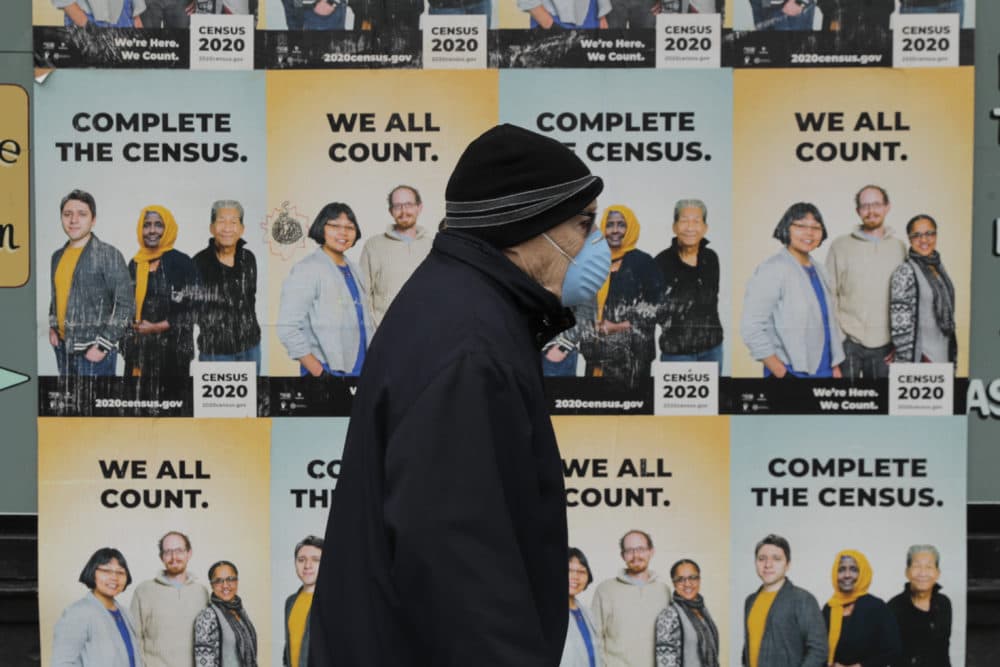Advertisement
Making Sense Of America's 'Great Demographic Illusion'

In the year 2000, the U.S. Census Bureau projected a monumental demographic change. By 2059, white Americans would no longer make up the majority of the population. The U.S. was destined to become a majority-minority country. In the two intervening decades, this transition made headlines.
It also excited some Democrats, who believe that increasing racial diversity automatically means more Democratic voters. The same presumption supposedly invokes fear on the right. Richard Alba says both narratives are wrong. His research shows that as racial diversity has increased, so has the recognition of multiracial identities.
Both “white” and “people of color” don’t mean what headlines suggest. Could the demographic shifts actually be bringing Americans together rather than apart? And do we need a new vocabulary to understand a changing America? Today, On Point: Making sense of the United States’ demographic future.
Guests
Richard Alba, distinguished professor of sociology at the Graduate Center, City University of New York (CUNY). Author of "The Great Demographic Illusion: Majority, Minority and the Expanding American Mainstream." (@albamoore1)
Ian Haney Lopez, professor of public law at UC Berkeley. Co-founder of the Race-Class Narrative Project. Author of "Merge Left." (@IanHaneyLopez)
Interview Highlights
Is the future of a majority-minority America as simple as the headlines have made it out to be?
Richard Alba: “It's not that simple. And I think, if we look at this majority-minority story, what stands out to me is, in fact, its simplistic aspects. And it views the society as neatly divided into two huge blocs, whites on the one hand and people of color on the other hand. And we have new developments in our society, particularly the rise of ethno-racial mixing in families, people who form families who come from different major ethno-racial groups. Let's say whites on the one hand and Asians on the other, or Hispanics on the one hand and African Americans on the other. And this development … it's really a new social change in that early 21st century. And it has transformative potential, but it certainly is making more complex the picture of our coming demography.”
On the pervasive political impact the majority-minority myth has on Americans
Richard Alba: “We have very good social psychological research that shows that when whites are prompted to think about the majority-minority scenario for the American future, they feel anxious. They become more conservative in the opinions they express. They also express greater resentment of minorities. So in that sense, I say this is a really divisive narrative that we tell ourselves about our future. There's also a great deal of political science research that has gone into understanding the outcome of the 2016 presidential election.
"And on the whole, I would say that research pinpoints the racial resentment felt by many whites, especially working class whites, as a major factor that led to the victory of Trump in that election. And of course, he played very much on racial resentments in his campaign. And those resentments are fed in part by the notion that whites are inevitably going to lose status in American society because of this coming minority majority population.”
On solutions for how the Census Bureau can better classify people
Richard Alba: “There’s one improvement that the Census Bureau has actually experimented with and would have used in 2020 if it were allowed to. Now, that sounds odd, but the Census Bureau does not control the questions that it asks about ethnicity and race. They are set by the Office of Management and Budget. If you believe that. It does not sound like a scientific organization to me. But in any event, the job of the Office of Management and Budget is to guarantee a uniformity of data among federal agencies. So this is why it has this controlling position.
“So the question that the Census Bureau asked was to treat Hispanic origin as a racial category. So there would be instead of two questions, which is the way it works now, one on race, one on Hispanic origin. It would have one question that appears to be a race question. People would be allowed to give multiple responses and Hispanic would be a category. And we know from the tests that the Census Bureau did that that question works far better than ... the two question way of collecting [this] data. It still leaves the issue, of course, of how to treat mixed Americans. And I think that an attempt to impose a binary on mixed Americans at this point is really a distortion of social reality.
“So we really need a more complicated way to approach this. So let me give your readers a feeling for how significant this is. We know from births, we have very good data from birth certificates about parents’ origins. And we know that today about 15% of babies born in the United States have parents from two different major ethno-racial categories. And about 11%, or one of every nine, have a white parent and a nonwhite parent. Those are big numbers. They've been increasing over time. And I don't see any reason to think that they won't continue to increase for the near future. So mixing is going to be a very important component of our demography down the road.”
Advertisement
Book Excerpt
Excerpted from THE GREAT DEMOGRAPHIC ILLUSION: Majority, Minority, and the Expanding American Mainstream by Richard Alba. Copyright © 2020 by Princeton University Press. Reprinted by permission.
From The Reading List
The Atlantic: "The Myth of a Majority-Minority America" — "In recent years, demographers and pundits have latched on to the idea that, within a generation, the United States will inevitably become a majority-minority nation, with nonwhite people outnumbering white people."
This program aired on July 7, 2021.


